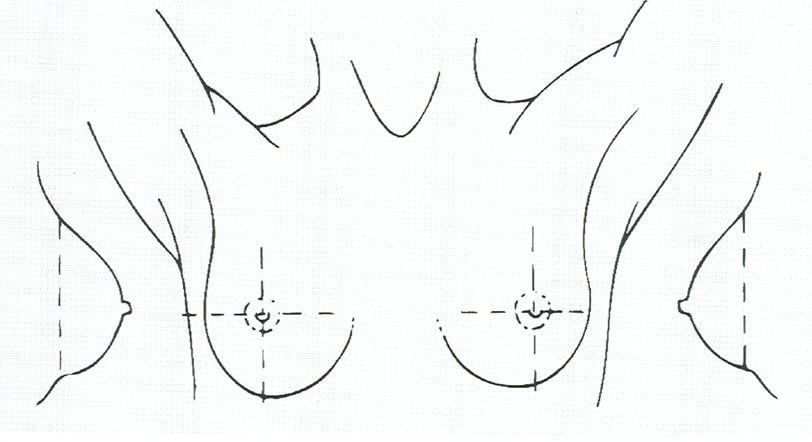Your doctor will ask you about your breast health and family history, and then examine your breasts. You may also have a mammogram, ultrasound or both tests to look for the cause of the pain (such as a breast cyst). It's important to tell your doctor how long you have had the pain, where the pain is, what the pain feels like, and what brings on the pain. It’s also helpful to tell your doctor what you have tried to relieve the pain and what's worked or what hasn’t worked. Use the diagram below to help describe your pain to your doctor or breast health specialist.

Make an appointment to see your doctor if your breast pain:
- lasts longer than a few weeks
- is in one area of the breast
- is getting worse
- is spreading or changing
- is affecting your everyday activities
- is waking you up at night
- is associated with redness/rash or swelling
It may help your doctor find what’s causing your pain if you keep a record of your pain for 3 to 4 months. Use this
calendar to help you track your breast pain. When you track your breast pain using a scale of 0 to 10 (with 0 being no pain and 10 being the worst pain you can imagine), you or your doctor may notice a pattern or if it's linked to your lifestyle or your menstrual periods.
Chest wall pain
Chest wall pain (also called musculoskeletal pain) can be referred into the breast area and feel like breast pain. Chest wall pain may be due to the muscles, ligaments, or even nerves along the chest area behind the breast. After an injury, doing a lot of exercise, or if there is inflammation (swelling) between the ribs and breast bone, this can cause soreness. Chest wall pain usually has no particular pattern, can affect one or both sides of the chest, and can spread out from the armpit or go down your arm. Physical activity may make the pain worse. This pain often goes away in time. But you should still make an appointment for your doctor to assess the pain, especially if you have a history of trauma or surgery in the area, or have a heart condition. Physiotherapy or massage therapy may help manage chest wall pain.
